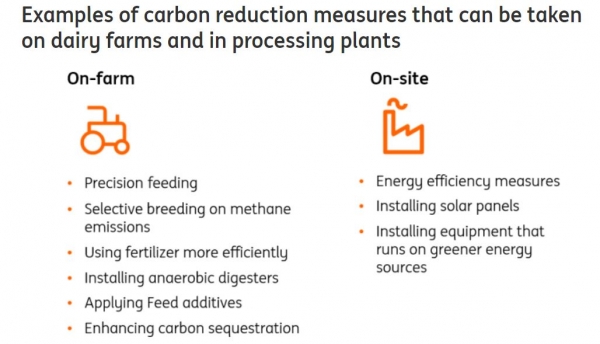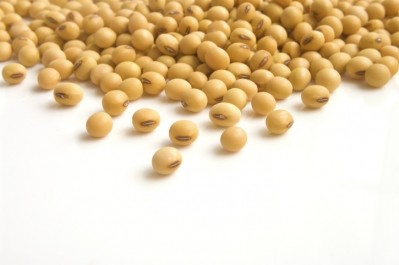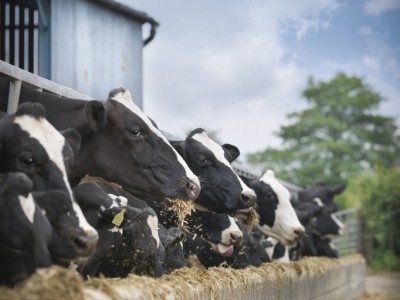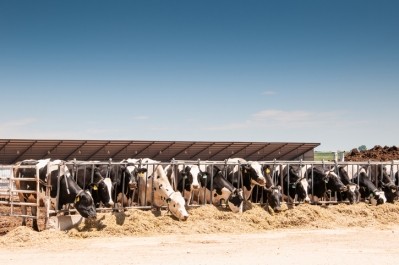The path to net zero in dairy: Exploring feed additives, anaerobic digesters, and soil carbon storage
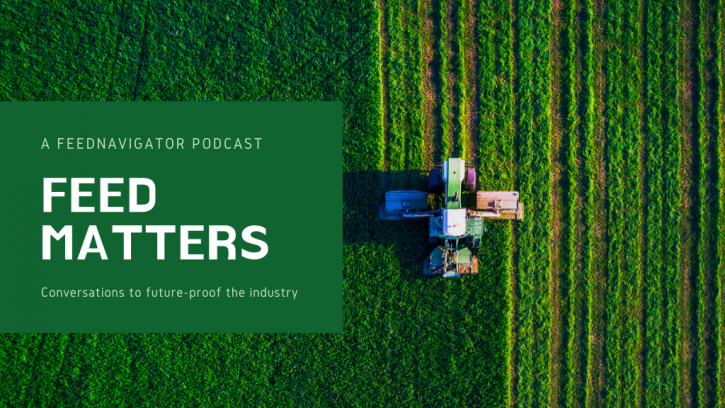
The array of feed additives aimed at mitigating methane emissions from dairy cattle continues to expand. While acknowledging their diminished efficacy in pasture-based systems, companies across major dairy regions are actively exploring these additives, Thijs Geijer, a senior economist at ING specializing in the food and agriculture sector, told us in the latest episode of Feed Matters.
European companies are scaling up initial trials with Bovaer from dsm-firmenich. Notably, Danone, Groupe Bel, and Norwegian Q-Milk are already marketing milk products sourced from Bovaer-fed cows. Expectations within the dairy industry are buoyant, given that additives have the potential to slash carbon emissions in milk production by 10-15%. However, the rollout will likely proceed gradually. A pivotal juncture is anticipated in 2025, as dsm-firmenich aims to equip five million cows with Bovaer, a figure constituting a quarter of the EU dairy herd, reads the economist's report.
Operational costs stand out as the primary obstacle. Implementing such additives on a typical dairy farm in the Netherlands - housing 75-165 cows - could hike costs by €4,000 to €10,000 (US$10,870), translating to a 1% increase in total expenses, he stressed.
Scaling up anaerobic digesters: Government support is a prerequisite
Anaerobic digesters emerge as a potent tool for curbing methane emissions from manure. Despite a growing number, their deployment remains limited across dairy farms. In the US, approximately 425 digesters operate on dairy farms out of a total of 24,000, reported Geijer.
Another avenue involves transporting manure from clusters of farms to larger centralized digesters. Denmark and California boast widespread integration of biodigesters, particularly on larger dairy farms, owing to steadfast policy support, including subsidies for green gas producers, and blending obligations for energy companies, he explained.
Moreover, countries like France, the Netherlands, and Ireland harbor ambitious plans to bolster biomethane production to supplant natural gas. For dairy farmers in France and the Netherlands, digesters offer a means to curtail manure emissions. However, in Ireland, the prevalence of outdoor grazing poses challenges to on-farm digester feasibility. An uptick in biomethane availability could furnish the dairy industry with a cleaner energy source for processing facilities and trucks, with digestate serving as a greener alternative for fertilizer.
Both the initial investment and heightened production costs for biomethane pose formidable hurdles. In Ireland, biomethane production costs are estimated to be two to four times higher than those of natural gas. A typical Dutch dairy farm might anticipate an investment of around €500K for a biodigester, assuming existing infrastructure like modern barns is in place. Nevertheless, the actual investment varies based on farm size and digester type. California exemplifies how supportive policies can mitigate hurdles, with capital investments for constructing a biodigester on a 2,500-cow farm estimated at €8m. Revenue streams for Californian dairy farms encompass gas selling prices, with a majority stemming from credit generation under the state's Renewable Fuels Standards (RFS) program.
Soil carbon storage
Recognizing the inevitability of emissions in dairy production, bolstering carbon sequestration on farms emerges as a vital step to offset residual emissions. However, Geijer reckons this is more of a longer-term target for dairy firms on their path to net zero as several challenges confront players in this regard:
- The permanence of stored carbon remains a hurdle, given the dynamic nature of soil carbon stocks.
- Demonstrating the impact of specific activities on carbon stocks poses a challenge.
- In regions like New Zealand and the Netherlands, high carbon levels in grasslands hinder further increases.
The primary avenue for storing additional soil carbon lies in depleted agricultural land used for feed crops and afforestation efforts on non-productive land, finds the ING report.
Policies and frameworks in the US and Australia already enable farmers to trade carbon credits in voluntary markets. Nonetheless, current carbon prices in these markets often fall short of rendering soil carbon projects profitable. An additional complication arises for the dairy industry when farmers sell credits to other sectors, diverting focus from carbon reduction within the dairy sector, noted the review.
